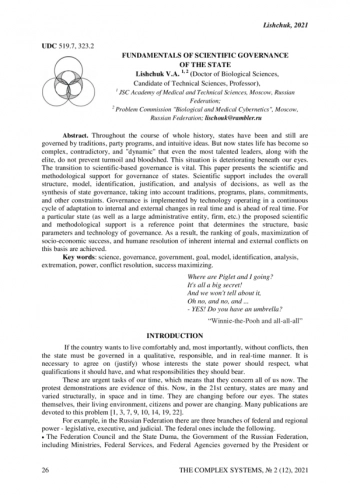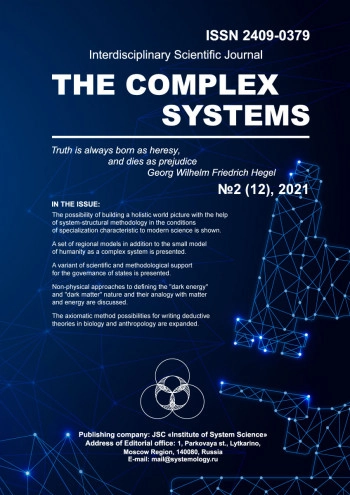Throughout the course of whole history, states have been and still are governed by traditions, party programs, and intuitive ideas. But now states life has become so complex, contradictory, and “dynamic” that even the most talented leaders, along with the elite, do not prevent turmoil and bloodshed. This situation is deteriorating beneath our eyes. The transition to scientific-based governance is vital. This paper presents the scientific and methodological support for governance of states. Scientific support includes the overall structure, model, identification, justification, and analysis of decisions, as well as the synthesis of state governance, taking into account traditions, programs, plans, commitments, and other constraints. Governance is implemented by technology operating in a continuous cycle of adaptation to internal and external changes in real time and is ahead of real time. For a particular state (as well as a large administrative entity, firm, etc.) the proposed scientific and methodological support is a reference point that determines the structure, basic parameters and technology of governance. As a result, the ranking of goals, maximization of socio-economic success, and humane resolution of inherent internal and external conflicts on this basis are achieved.
Сайт https://scinetwork.ru (далее – сайт) работает по принципу агрегатора – собирает и структурирует информацию из публичных источников в сети Интернет, то есть передает полнотекстовую информацию о товарных знаках в том виде, в котором она содержится в открытом доступе.
Сайт и администрация сайта не используют отображаемые на сайте товарные знаки в коммерческих и рекламных целях, не декларируют своего участия в процессе их государственной регистрации, не заявляют о своих исключительных правах на товарные знаки, а также не гарантируют точность, полноту и достоверность информации.
Все права на товарные знаки принадлежат их законным владельцам!
Сайт носит исключительно информационный характер, и предоставляемые им сведения являются открытыми публичными данными.
Администрация сайта не несет ответственность за какие бы то ни было убытки, возникающие в результате доступа и использования сайта.
Спасибо, понятно.




